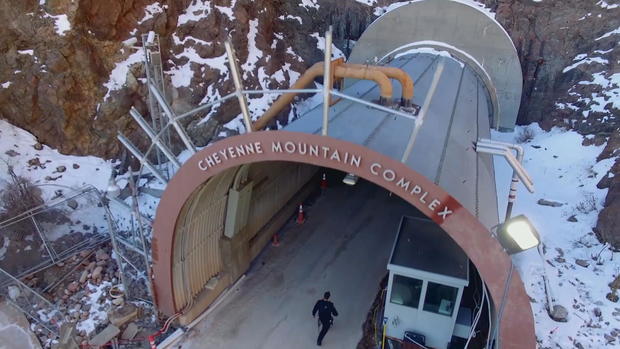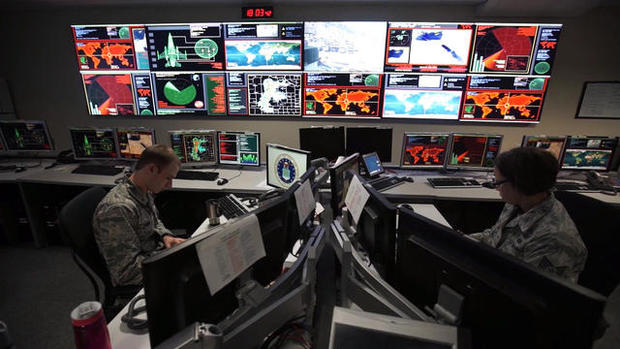America's fortress: Inside the base that defends U.S. in outer space
Deep inside a cave, a military base in Colorado's Cheyenne Mountain plays a critical role in the mission to protect America and its allies in outer space.
It is said the Colorado's Cheyenne Mountain Air Force Station acts like the human brain stem, reports CBS News correspondent Bianna Golodryga. The survival bunker pulls in information, makes sense of it, and passes it along to the brain – or our country's decision-makers. There's also good reason Cheyenne Mountain is known as America's fortress.
"It is the nerve center for the blanket of defense for the U.S.," said Col. Robert Moose, who commands the 721st Mission Support Group at Cheyenne Mountain.
That nerve center is here in Colorado Springs, an impenetrable fortress beneath 2,000 feet of granite.
"We provide 24/7 global watch on all ballistic missile threats," Moose said. "The sensors that are global are feeding data into Cheyenne Mountain to send process and disseminate it to the national leaders."
This complex was built at the height of the Cold War in the 1950s and '60s to defend against long-range Soviet bombers.
Cold War tensions have since thawed. But Russia and China are developing technology that could disable or destroy America's satellites, and North Korea has launched a litany of missile tests.
"Is this facility still equipped to handle what we've seen happen throughout the last 40 years?" Golodryga asked.
"It is. It's designed to be a survivable, high-altitude, electromagnetic pulse certified facility that will survive any threat to the North America right now," Moose said.
The underground bunker is survivable, so that the various government agencies inside can surveil the skies and provide security to the U.S. and Canada. If a foreign country attacks the American heartland, two 25-ton doors would seal the mountain and everyone inside the base within 40 seconds.
"Since the Cold War, has there ever been a need or a threat or a scare to where both doors have been closed?" Golodryga asked.
"Sept. 11, 2001 is the only time they've ever been closed," Moose said. "There was an aircraft out of San Diego that we had lost contact with… It was heading towards Colorado, so we closed the blast doors."
This is a small underground, windowless city. There is a hospital and a fire department. Firefighter Kerry Thompson run drills so he and his colleagues are prepared to respond to any medical emergencies.
If there is a seismic event like an earthquake, more than 1,300 rolled steel springs isolate the buildings.
"The buildings will just sway in their chambers and still continue to go on mission," Moose said.
The Pentagon spent $22 billion last year on space defense. Despite gravity-defying efforts, some congressional leaders accuse the Pentagon of not doing enough to prioritize space.
The House adopted a version of the National Defense Authorization Act this summer, which calls for the creation of a new combat-ready space corps by 2019. The Senate's version of the bill prohibits this, pitting the two chambers on a collision course over space.
Gen. Jay Raymond heads up U.S. Space Command and is opposed to creating a separate space corps.
"The Air Force has been leaders in space for over 60 years," Raymond said. "We have the world's best space capabilities without a doubt. And today there's nothing we do as a joint force that isn't enabled by space. Our potential adversaries have had a front row seat and have watched us integrate space capabilities to great advantage. And to be honest, they probably don't like what they see."
Space is a bit like the Wild West. There is no agreed-upon code of conduct. There is a 1967 U.N. treaty that calls for the peaceful use of outer space, but there are more players than ever battling for the skies – and it seems to be every country for itself.






